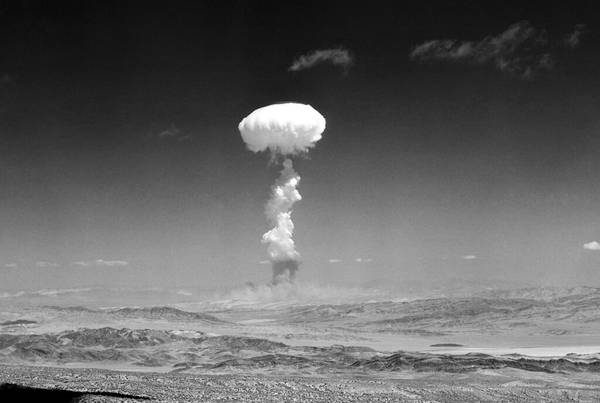On the anniversary of a meaningful day in history, we present this argument opposing the Trump administration’s idea of resuming live testing of nuclear weapons near Las Vegas.
75: Years ago, to the day, when the last atomic bomb was dropped in anger.
110,000-210,000: Estimated death toll of the bombs dropped on Hiroshima and Nagasaki on Aug. 6 and Aug. 9, 1945, respectively.
2,000-plus: Nuclear tests that have been conducted since the end of World War II by the U.S., Russia and six other countries.
1,021: Number of detonations that occurred in 928 tests conducted in Nevada, with some tests involving more than one device.
100: Number of above-ground detonations in Nevada from 1951 to 1962.
65: In miles, the distance between Las Vegas and the Nevada Test Site (now the Nevada National Security Site).
74: Yield, in kilotons, of the largest above-ground device detonated at the Nevada Test Site, which occurred in 1957. The bomb delivered the equivalent of 74,000 tons of TNT.
35: Combined yield, in kilotons, of the bombs dropped on Hiroshima and Nagasaki.
5: Number of men who were positioned below a nuclear explosion in July 1957 for a government film designed to prove to the public that above-ground testing was safe. The film was part of a larger, years-long campaign to convince Nevadans and our neighbors not to worry about the effects of testing.
11,000: Number of cancer deaths stemming from above-ground testing in Nevada, as estimated by the Centers for Disease Control and Prevention in a 2003 report. That number is disputed, however, with some researchers saying the death toll may have been many times that based on how far the fallout would have traveled. One study estimated the minimum number of dead at 145,000.
1.3: Yield, in megatons, of the largest detonation at the site, part of the “Boxcar” underground test of 1968. That’s the equivalent of 1.3 million tons of TNT.
20: According to one estimate, the above-ground tests in Nevada sent 20 times more radioactive material into the atmosphere than was released during the Chernobyl catastrophe.
$2 billion: Amount Congress would eventually pay to Nevadans and downwinders exposed to radiation from test blasts.
1.6 trillion: Gallons of groundwater contaminated by radiation from below-ground tests, according to one estimate. That equates to 16 years worth of Nevada’s allotment of water from the Colorado River.
28: Years that have passed since the United States placed a moratorium on nuclear testing.
0: Number of detonations currently needed to ensure that stockpiled nuclear weapons are safe, secure, reliable and effective. Modern computers and physics equipment have made live testing unnecessary.
0: Number of Southern Nevada’s congressional delegates who support resumption of nuclear testing at the site. Sens. Catherine Cortez Masto and Jacky Rosen, and Reps. Dina Titus, Susie Lee and Steven Horsford, all spoke out in opposition. In a prepared statement, Rosen said Nevadans “do not want to return to a time when the ground shook and radiation exposure was a fact of life,” and that “any actions that could place Nevadans’ health and safety at risk should be off the table.”
0: Number of tests that would be allowed at the site under legislation introduced by Titus and recently approved by the House. “I did not introduce this ban lightly, but it was necessary to prevent President Trump from recklessly threatening Nevadans’ health and potentially restarting a global arms race,” Titus said in a prepared statement.
0: The number of reasons we can find to support Trump’s plan.

